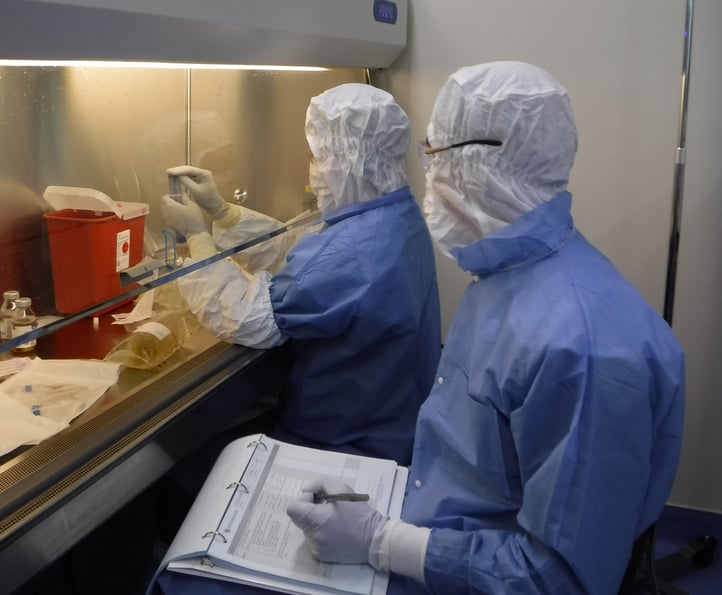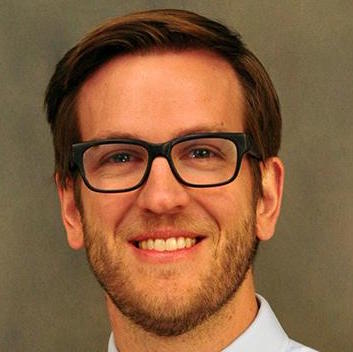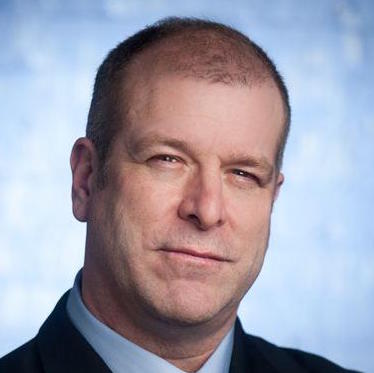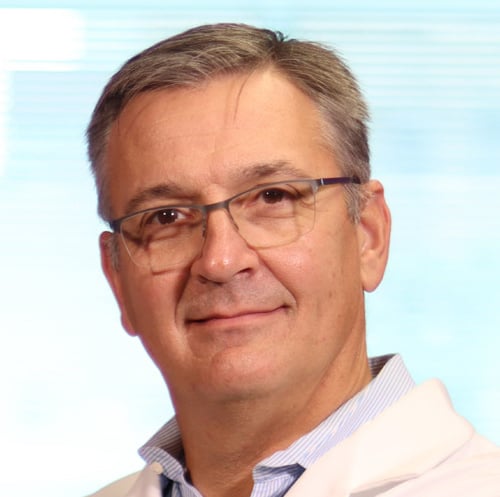“When you lose hope, you lose everything,” says Ron Randolph. “It’s like you’re in the bottom of a hole and you see this light at the top of the hole. It’s a very small light, but there’s no way to escape.”
Randolph was at the bottom of the hole. After being diagnosed with the blood cancer multiple myeloma in 2018, he underwent several chemotherapy treatments — some of which had side effects so severe that they sent him to the hospital — as well as a bone marrow transplant. But still the cancer kept creeping back.
The light at the top of the hole shone brighter for Randolph in March 2021, when the U.S. Food and Drug Administration approved a new type of treatment for multiple myeloma: chimeric antigen receptor cell therapy (CAR T-cell), other forms of which already had been approved for blood cancers including acute lymphoblastic leukemia and non-Hodgkin’s lymphoma.
With the revolutionary new cancer treatment, doctors draw a patient’s blood and send it to a lab, where immune cells are extracted and reengineered to become cancer fighters before being reinfused into the patient’s body.
“When they’re placed back in your body, they act like hunter-killers,” says Randolph, 65, who lives in Greeley, Colorado. “They only attack my myeloma cancer cells. They do not attack normal cells like chemotherapy does. I was blessed to get the CAR T-cell treatment. Without that, my only other option was another bone marrow transplant.”
Cancer free and enjoying life
Just one month after his CAR T-cell infusion at UCHealth University of Colorado Hospital (UCH), Randolph was declared cancer-free. Multiple myeloma is a terminal cancer that almost always comes back eventually, but for now, Randolph is enjoying life cancer-free in what his doctors say will be the longest remission he has had since he began waging his battle against multiple myeloma nearly four years ago.
 Ron Randolph
Ron Randolph
“He’s gotten into a really deep remission. It’s the best response he’s had to any of his treatments,” says CU Cancer Center member Peter Forsberg, MD, who has treated Randolph since 2018. “We anticipate all multiple myeloma patients are likely to have some recurrence of their disease down the road, but the hope is that this will create a pretty stable, relatively long-lasting remission where he won’t need other therapies. It’s great peace of mind for him, and it’s a really nice relief to be able to spend some time away from that continuous treatment approach that we’re so often stuck with in myeloma.”
In patients with other types of cancers, CAR T-cell therapy has gone beyond initial remissions to more long-term remissions that look like complete cures. It marks a huge advance in cancer treatment, says CU Cancer Center member Michael Verneris, MD, one of the primary CAR T-cell researchers at the University of Colorado School of Medicine.
“This is an exciting time and an important time in medical history,” he says. “In the future, when we draw a timeline of all of the advances in medicine — anesthesia, antibiotics — this will be one of the things on that map. This is how important this will turn out to be. I’m convinced of it.”
The CAR-T revolution
Though newly approved for treatment of multiple myeloma, CAR T-cell therapy has, over the past few years, created new hope for patients with blood cancers. Researchers are now reviewing its effectiveness in treating solid tumors and brain tumors as well. Armed with the expertise and equipment to conduct numerous clinical trials involving CAR T-cells, the CU Cancer Center is one of the institutions on the leading edge of a revolution in cancer treatment.
“We’ve known for some time that cancers have many devious ways of turning off the immune system against the cancer,” says CU Cancer Center member Clay Smith, MD, director of the Blood Disorders and Cell Therapies Center at UCH. “Only in the past few years have we learned how to overcome that and reverse that. One of the ways is to take a person’s immune cells out of their body and genetically reengineer them so they’re now primed and ready to go back in and attack cancer cells.”
That reengineering happens via an unlikely source: the HIV virus, a part of which is used to introduce a new piece of DNA called a chimeric antigen receptor (CAR) into the immune cell called a T-cell. The newly formed CAR T-cells are programmed to seek out and destroy cancer cells once they are put back into the patient’s body in a one-time infusion.
“You can genetically engineer out all the bad parts of the HIV virus and put in all the cancer-fighting parts,” Smith says. “We do that because the HIV virus is very efficient at infecting the T-cells to turn them into CAR T-cells. Having grown up at the time when HIV was first discovered and was a tragic epidemic, it’s been amazing to watch how they can take something that devastating and turn it into something not only harmless, but actually beneficial to people with cancer.”
For patients like Randolph, the CAR T-cell therapy process begins with a simple in-clinic blood draw. The blood is then frozen and sent to a lab, where the CAR is added to the T-cells. A few weeks later, the patient checks into the hospital and receives some mild chemotherapy to neutralize immune cells that might attack the CAR T-cells. The reengineered blood is then infused back into the patient over several hours, and doctors watch closely for side effects including cytokine release syndrome, an inflammatory response from the immunotherapy that can cause inflammation in the brain. The treatment currently is approved only for patients who have failed other forms of chemotherapy and immunotherapy, but researchers are hopeful it will eventually become a more frontline standard of care.
CAR T-cells not only have the advantage of destroying only cancer cells, leaving normal growth cells alone, but they are “living drugs” that proliferate in the bloodstream and persist for months to years after the infusion, potentially providing long-term surveillance against cancer recurrence. Smith, who works with patients who have undergone CAR T-cell therapy — helping them manage side effects and hopefully seeing them get better — has seen how effective the new therapy can be.
“It’s really remarkable. There are patients for whom all chemotherapy has failed, and if we didn’t have this treatment, likely we wouldn’t have anything for them,” he says. “To see them at least respond — and sometimes you see the cancer go away really quickly — it’s incredibly exciting and satisfying as a physician.”
Building the infrastructure
At the CU Cancer Center, the road to the CAR T-cell revolution began in 2006, with the opening of the Gates Center for Regenerative Medicine on the University of Colorado Anschutz Medical Campus. Established with a generous gift in memory of Denver industrialist and philanthropist Charles Gates, the Gates Center accelerates collaboration among medical researchers and clinicians in the areas of regenerative medicine and gene therapy.
 Reseachers at the Gates Biomanufacturing Facility
Reseachers at the Gates Biomanufacturing Facility
Focused originally on stem cell therapy, the center has since become a leader in CAR T-cell therapy as well. In 2015, the Gates Center and its partners built the Gates Biomanufacturing Facility to help on- and off-campus investigators translate innovative research discoveries into safe and effective new cell therapy and protein products for use in clinical trials. That means CU Cancer Center researchers performing clinical trials on CAR T-cells and other gene therapies no longer have to send a patient’s blood to California or New Jersey to be reengineered; they can simply send it across campus to the Gates Biomanufacturing Facility for processing. Staff at the facility offer researchers support and technical expertise for their projects as well.
“Researchers have long noted the ‘valley of death’ that lies between having a good idea and actually getting it into a phase I clinical trial,” says Matthew Seefeldt, PhD, executive director of the Gates Biomanufacturing Facility. “It’s complicated. The academic has this idea, then they must suddenly learn FDA regulations they’ve never had to deal with before. They have to go out and raise a bunch of money, and they have to get the science right. To have us around to help with that, so we can get their project developed so it can become a fundable technology, is really important. There are otherwise a lot of technologies that would die on the vine.
“The fact that we have this capability on campus allows patients to have access to a therapy they might not normally have access to, and at the same time demonstrates that the infrastructure is now in place for us to handle these CAR T-cells in all aspects on campus,” Seefeldt continues. “We can develop them, we can manufacture them, we can then carry them over to the hospitals and administer them. Being able to build that entire system is unique. It doesn’t happen everywhere in the country. It really differentiates UCHealth University of Colorado Hospital and Children’s Hospital Colorado from other institutions in the country.”
The talent explosion
The Gates Biomanufacturing Facility put the University of Colorado School of Medicine on the map for cell and gene therapies, including CAR T-cells, and the School of Medicine began recruiting faculty members whose expertise in CAR T-cell therapy led to an explosion of research on campus. In addition to Verneris, CU Cancer Center members including Eduardo Davila, PhD; Terry Fry, MD; Breelyn Wilky, MD; and Eric Kohler, MD, PhD, are involved in clinical trials studying the effectiveness of new forms of CAR T-cell therapy on different types of cancers in children and adults.
“We’re all doing slightly different things, but the goal is to create the next generation of therapy,” says Verneris, who is working to develop a CAR T-cell that targets more than one biomarker on a cancer cell in order to double its effectiveness.
 Michael Verneris
Michael Verneris
“We are also focusing on some solid tumors in children and adults,” says Verneris, director of bone marrow transplantation and cellular therapy at Children’s Hospital Colorado. “For a lot of these tumors, therapy hasn’t changed from the 1970s until now. It’s not for a lack of trying, but nothing has worked. We’re targeting these tumors now with CAR T-cells, and at least in mice, it’s working really great.”
Verneris and other CU Cancer Center researchers also are working on clinical trials in support of a new type of CAR T-cell he says is almost like something out of science fiction. In an “allogeneic” CAR T-cell, instead of taking a patient’s own blood to create the cancer-fighting cell, a single donor would donate their blood to create an off-the-shelf CAR T-cell that could be infused into any number of patients. Doctors could order it like any other treatment.
“If you’re a young, healthy person, we could get blood cells from you,” Verneris says. “Then we could make CAR T-cells, and also make them so that another person’s immune system doesn’t see them as foreign. It’s even more genetic engineering, and it sounds like science fiction, but those clinical trials are just getting underway, and the results are pretty cool.
“I anticipate one day having a medical student seeing a child with leukemia, and taking that medical student aside and saying, ‘I remember when we used to give those children three years of chemotherapy.’ And now just one cell infusion will cure him. That’s how transformative this is,” Verneris adds.
A brighter future for more patients
As time goes by and more patients receive the treatment, Verneris says, physicians will become better at administering it and finding ways to minimize side effects. CU Cancer Center doctors recently treated their 100th adult CAR T-cell patient, but that’s just the beginning.
“We don’t know how to use this therapy perfectly yet. There’s a lot to be learned,” he says. “Having a critical mass of people, all the way from the concept to the bedside, allows you to really learn and treat this in an iterative way and to do the very best for these patients.”
For Randolph, the patient who received CAR T-cell therapy in June for his multiple myeloma, “hope” is a word that has re-entered his vocabulary.
“It was like a cakewalk compared to my bone marrow transplant,” he says of the CAR T-cell procedure. “I had no major side effects. I came home and felt great. For people out there with multiple myeloma, there is now hope for living longer.”
 Ron Randolph before a skydiving excursion
Ron Randolph before a skydiving excursion
Randolph now works out every day and has more time to spend with his family instead of in a hospital room. He retired from his longtime hobby of car racing a couple of years back, but he’s found another high-speed pursuit: skydiving. He has gone twice so far and plans to go again soon.
“It was on my bucket list,” he says with a laugh. “I like the rush. I am definitely an adrenaline junkie.”
Randolph is thankful he was “in the right place at the right time” to receive the CAR T-cell treatment, and he’s thankful to Forsberg for helping him get the therapy. The future, he says, looks a lot brighter than it used to.
“Every day is a gift from God,” he says. “I check the obituaries to make sure I’m not in them, and if I’m not in them — man, it’s a good day.”






.png)